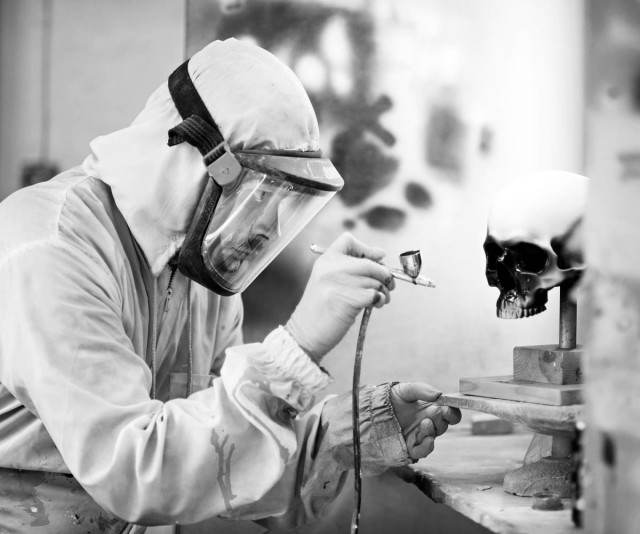Born 1970 | Lives and works in Helsinki
The artist Jiri Geller is many things: a silversmith, a magician, a punk rocker, a sculptor and a perfectionist. His artist name itself, which is taken from the TV magician Uri Geller, reveals where the roots of Jiri Geller’s art lie. He is an illusionist of his own art, his works seek to mislead and to challenge viewers to rethink their ideas about the surrounding world and to change their conception of reality. Geller himself says his art is dangerous and seductive, and talks about “the lure of destruction and the enchantment of the vulgar”.
At the centre of Geller’s works is Pop art and its numerous subgenres, which he freely adapts by, in his own unique way, crossing their boundaries and combining subjects, symbols and images from different genres. Frequently added to figures and characters from Pop are religious elements; for example, a crown of thorns is placed on Donald Duck’s brow. We can also see influences from rock and punk music, along with strong references to the world of comic books.
The works have a humorous streak; they may laugh, but that laughter is black and cracked. The shadow side that often accompanies the bright, cheerful neon colours and humour typical of Geller involves imagery of death and violence; for example, Vanitas themes, such as the skull, are a recurrent presence. Contrast is a hallmark of Geller’s art; everything is both playful and ponderous, familiar and unknown. In postmodern fashion Geller occupies an intermediate space between all of this and leans towards surrealism with his unreal works that deceive and baffle the viewer.
At the core of Geller’s artworks is an attempt to make perfect objects, which are simultaneously suspect in their perfection. He wants to make objects that look better than reality. The works are often smooth, shiny or matt-surfaced and appear immaterial, lightweight and static – illusion-like. And yet, in their very staticness they are filled with a flowing energy. The material is unpredictable and enigmatic; when looking at a work it is often hard to know what it is made of, and thus the mantle of the magician once again falls onto Geller’s shoulders. He generally executes his chosen themes in a life-like manner and life-size, their scales and proportions have to be correct.
The quest for the perfect object that is at the core of Geller’s works is comparable, for example, to Andy Warhol’s goal of making art like a machine or to Roy Lichtenstein’s art. Geller, too, masks slow, arduous manual work to look like it was done by machine, and the endless reworking, polishing, painting and finishing of objects are comparable to machine-like movements. Geller himself speaks of “customizing”, i.e. tailoring, his objects and production; he “customizes” items and images familiar from Pop art to create his own messages and unique artworks. As his materials he uses, for example, pigmented cast resin, glass fibre, metal and plastic. The works’ lack of the mark of the hand gives the whole of Geller’s art a paradoxical imprint.
Nowadays, Geller often uses serial works instead of individual ones and his art has switched from the serious, apocalyptic considerations of the age to exploring the current situation and rhetoric. Things that in the modern world’s appear solid, valuable and immutable are called into question. They, too, are not necessarily what they appear to be; everything melts, everything is in doubt, and everything is momentary, fleeting and temporary – perishable.
